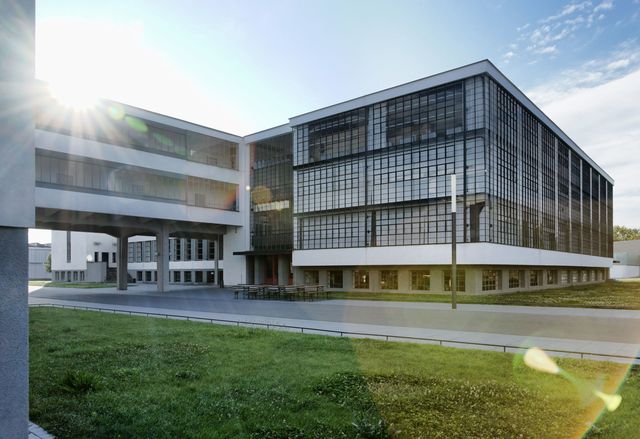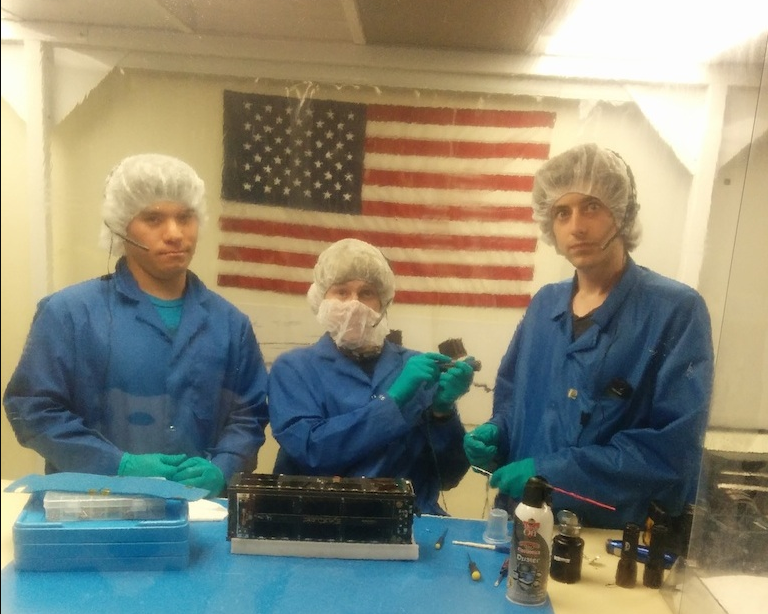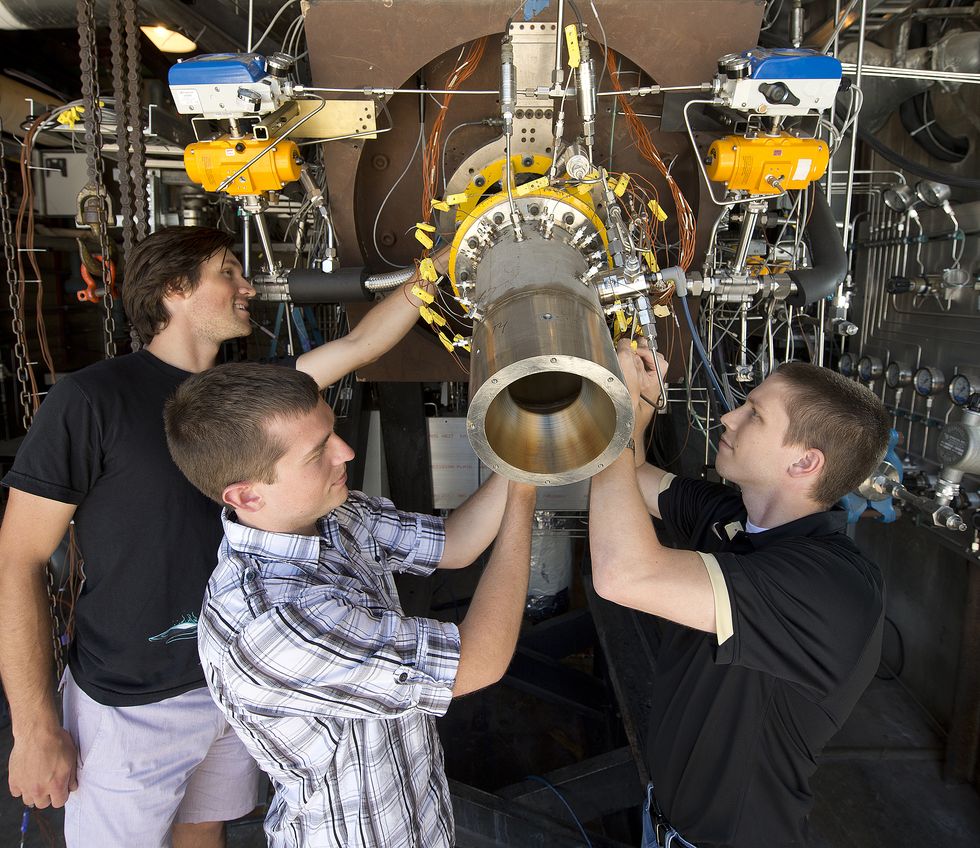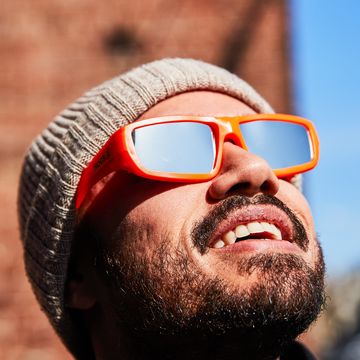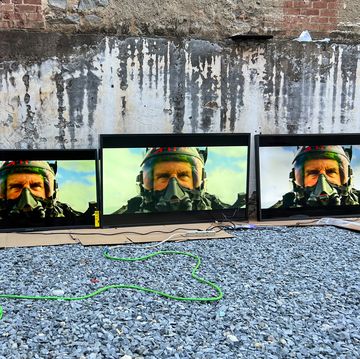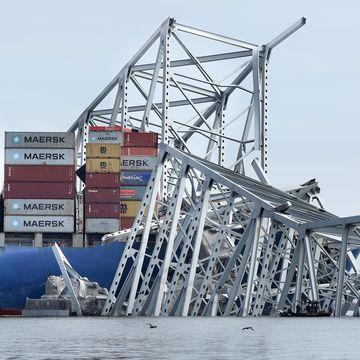Top colleges and universities are racing to build big programs in science and technology. We looked for the most innovative and exciting, the unsung schools best preparing students for tomorrow through STEM classes, academic clubs, undergrad research, and strong ties to industry. Here are this year's picks.
SOUTHEAST: Virginia Tech
The Future of Science Classrooms
Virginia Tech has a history of excellence, highly competitive engineering teams, and, according to our student interviews, one of the friendliest campuses in the world. And despite being tucked away below the rolling Blue Ridge Mountains, Virginia Tech maintains strong ties to top employers across the country like Lockheed Martin, Amazon, and GM. That all makes the solid foundation of a great institution—and the public-school tuition is nice—but Virginia Tech stands out as a national leader for its innovative science curriculum.
Virginia Tech's most notable development is its Academy of Integrated Science. The school opened with the goal of providing hands-on classes drawing from multiple departments to develop collaborative and critical-thinking skills with research experience. If technology employers could create the perfect college graduate in a lab, this is the skill set they would choose.
Any student can apply for the two-year (freshman and sophomore) Integrated Science Curriculum, which combines chemistry, math, physics, and biology into learning modules on subjects like solar energy and nanoparticles. The ISC labs depart from traditional counters, letting students move tables and equipment to suit their needs, such as performing simultaneous chemistry and microbiology tasks. "We designed and synthesized gold and silver nanoparticles to carry medication, and could even test if the particles worked," says former ISC student Dominique Ngo.
Of the academy's three majors, its flagship, computational modeling and data analytics (big data), is what drew senior Rachel Szabo. Her major blends math, statistics, and computer science, and the CMDA Club competes in data-analysis competitions, making sense of massive data sets such as hotel-booking habits. "I feel like I can easily branch out and go to a computer-science job fair," says Szabo, who has. "Recruiters are impressed by your variety of skills when everyone around you is narrowly focused."
Also Great:
University of Florida, Gainesville: The big state school is investing heavily in undergrad research.
North Carolina State University: The Wolfpack leads in outreach and retention of underrepresented students in engineering.
NORTHEAST: Worcester Polytechnic Institute
The Best School for a Scientist to Study Abroad
Instead of the traditional study-abroad classrooms and art museums (and pubs), students in WPI's Global Projects Program complete term-long research at the school's 42 centers. Past projects include alleviating traffic in an Indian city of 60,000 and developing a safe, sustainable paper insulation for settlements in Namibia.
"The Global Projects Program is why I went to WPI," says civil engineering senior Rachel Santarsiero. "You're integrating into a community, working with local students, companies, or NGOs, and applying your skills to real-world applications." Last year, Santarsiero traveled to Morocco to work with Dar Si Hmad, an NGO that installed fog-harvesting nets to bring water to communities where women and children previously spent hours traveling for water. "It's cliché, but I gained perspective on what's really important."
Students can research abroad three times, and, starting this year, every incoming freshman receives a $5,000 scholarship for a Global Research Project. The program is part of a larger philosophy that removes required coursework in favor of a hands-on education, says Arthur Heinricher, dean of undergraduate studies. "Technically there are no required courses for graduation." The goal is to get students to make an impact, solving real-world problems, as well as learning how to learn—one of the top skills recruiters say they look for.
Also Great:
Clarkson University: The New York STEM school stresses entrepreneurship so engineers can pitch and finance their designs.
Vaughn College: Small, specialized school in Queens, New York, with a world-champion VEX U robotics team.
CANADA: University of Toronto
The World-Class Engineering School You Haven't Heard Of
Not much news on this public university seems to cross the border, but technology companies are well aware of the exceptional students graduating from Toronto. Recently, the school was one of eight North American universities selected by GM to compete in its AutoDrive Challenge—a three-year competition to make a Chevy Bolt fully autonomous.
The team, with roughly 40 members, is just starting up, but it builds on the school's past success in student-led clubs. Toronto's Human-Powered Vehicles team has broken multiple world speed records, including hitting 88 miles per hour on its aeroshell-covered bike. The group is now pursuing human-powered submarines. Why? "Mostly because it's difficult," says aerospace engineering major Evan Bennewies. "We have lots of passionate students."
Bennewies joined the Vehicles team for its mix of engineering theory and hands-on experience, but says the greater appeal of University of Toronto is that there's a club for everyone.
Toronto's research pedigree also runs impressively deep. The computer-science department was an early leader in machine learning. And the electrical and computer engineering program is home to Steve Mann, who has been developing augmented reality for 40 years.
Also Great:
University of Waterloo: One of the world's largest co-op programs to give students work experience.
University of Quebec, École de Technologie Supérieure: Focuses on practical work and dominates student competitions.
Southwest: Arizona State University
The Research Giant Disguised as a Party School
ASU is a premier research institution and gold mine for curious students willing to reach out to faculty. "It's a big school and you have to search for opportunities, but the faculty is really open, and once you're linked in, this school is a steal," says Shiv Shah, a biological sciences junior. Shah also considered Johns Hopkins and Northwestern but says he chose ASU for the tuition and research opportunities. Through the School of Life Sciences Undergraduate Research Program, Shah holds a paid student researcher position, studying the proteins and pathways of neurological development disorders like autism with mice.
Across the palm-filled campus in the School of Earth and Space Exploration, recent ASU grad (computer science '16) Jack Lightholder says he also felt welcomed and encouraged by professors, despite not majoring in an SESE program. Lightholder studied how interstellar space dust clumped to form planets, and with guidance and funding from ASU, led an experiment on NASA's microgravity plane (a.k.a. the Vomit Comet). Lightholder credits his work at ASU for his post-grad internship at NASA's Jet Propulsion Lab, which later turned into a job. "ASU has a party school reputation and was originally my backup," he adds. "But the way faculty involved and engaged students showed me it was the right decision."
Also of note for future aerospace engineers: The ASU CubeSat team has launched two satellites, with a third in the works to map urban heat islands. And SESE professor Phil Christensen, along with student researchers, is developing a thermal camera for NASA's Europa Clipper mission to Jupiter's smallest Galilean moon.
Also Great:
University of Texas, Austin: All-around excellence amid Austin's tech and startup hotbed.
Texas A&M: Rooted in agriculture and petroleum, but with an impressive array of STEM majors.
Rockies: Colorado School of Mines
The Most Eccentric Engineering School in the West
Despite the antiquated name, School of Mines is a standard STEM-focused undergrad and graduate institution. But understand, it's not a normal engineering school. Mines will offer the world's first space resources (asteroid mining) program next fall and has the nation's only university-sponsored recreational explosives club. The latter was formed by a mechanics engineering student who sought money to "play with things that start on fire." The club performs fireworks displays and has simulated gunfire and shells from helicopters and tanks.
The mountainside school attracts outdoorsy students with a passion for engineering, energy, and earth sciences. It's a world leader in petroleum engineering, but student research in renewable energy is also booming. One of Mines' premier extracurriculars, the Solar Decathlon team, strives to build a net-zero-energy-consumption house for the Department of Energy's 2019 event. The group already built a 220-square-foot proof-of-concept tiny house to test theories and construction.
Also Great:
University of Nevada, Reno: From champion concrete boats to earthquake labs, it's a playground for civil engineers.
University of Utah: One of the nation's leading video-game-design programs.
Pacific: California Polytechnic
The Best Campus to Get Your Hands Dirty
Cal Poly is a school for doers and makers, says aerospace engineering senior Will Sutton. "You don't just learn to be an engineer, you get to be one here." Sutton leads PROVE Lab, a student group formed to build the world's fastest non-battery solar car. It has drawn support from companies including Honda and Lockheed Martin. "The standing record is 56.5 miles per hour, and we plan to obliterate it," he adds.
Cal Poly is also home to PolySat, the student-run research lab that helped to develop the CubeSat—a small, low-cost satellite. Working with NASA, the team has built and launched eight satellites into space.
Another favorite student group: Quality of Life Plus (QL+). Working in the St. Jude–backed biomedical engineering lab, students develop custom prostheses and mechanical solutions for veterans and community members. "Seeing this club when I toured was a big reason I came here," says Jim Darke, a recent biomedical engineering grad. For his senior project, he worked with QL+ to build a wheelchair suspension for a Marine who lost both legs in Afghanistan.
The labs and resources dedicated to PROVE Lab, PolySat, and QL+ aren't unusual at Cal Poly. The almost-coastal school (ten miles from the beach) doesn't offer doctorate programs, leaving the weight of research to be loaded onto its eager undergrad population. "I started research my junior year that I don't think I could do at any other school," says Darke.
Also Great:
University of Washington: Leads in research spending, plus connections to nearby Boeing, Amazon, and Microsoft.
University of California, Davis: Makes STEM more accessible without sacrificing standards.
Midwest: Purdue University
The Biggest Playground for Makers
This fall, the public university opened an honors college dorm with its own maker space, but the bigger jewel on campus is the new Bechtel Innovation Design Center. The 32,000-square-foot buffet of workshops—auto bay, 3D print lab, woodshop, metal shop—was opened so that any student can walk in and build anything they have the imagination and energy for. Parents, relax: The Bechtel staff assesses every student's technical skill before their first project, and trains them on heavy equipment like the five-axis CNC, MIG welder, water jet, and laser cutter.
Purdue's resources, in addition to its reputation, are what drew electrical engineering junior Jonathan Bayless to the school. "The strong extracurricular programs have definitely been a highlight," he says. Bayless is the president of Purdue's competition robotics team (ranked sixth in the world last season), having joined his freshman year. "I found a really good balance of opportunities to learn from the older members and to build and lead the robots' development."
One more fact we love: Purdue is also the most accessible university in the nation for prospective astronauts. Since the dawn of NASA, 23 alumni have visited space.
Also Great: Rose-Hulman: Small, fiercely innovative school that actively opens hands-on experience to freshmen.
University of Illinois at Urbana-Champaign: A top STEM researcher built on multidisciplinary centers.
MORE STEM SCHOOLS WE LOVE:
Northeast: Cooper Union, MIT, Lehigh, Bucknell, Carnegie Mellon, Harvard, Syracuse, Columbia, Rensselaer, Cornell, NJIT, Brown, SUNY-ESF, Penn
Southeast: Georgia Tech, Florida Tech, Duke, Johns Hopkins, Alabama– Huntsville
Southwest: Rice, New Mexico Tech, Tulsa
Canada: McGill, British Columbia, Queen's University
Midwest: Wisconsin, Northwestern, Michigan, IIT, Notre Dame, Minnesota, Michigan Tech
Rockies: Colorado–Boulder, Colorado State, Montana State
Pacific: Caltech, Harvey Mudd, Stanford, UC Berkeley, USC, Deep Springs.
This story appears in the November 2017 issue.

Matt Allyn is the features director for Bicycling and Runner's World magazines. He's run nine marathons and come heartbreakingly close to BQing three times. In addition to running and cycling, he's also covered beer for more than a decade and is a certified beer judge.
